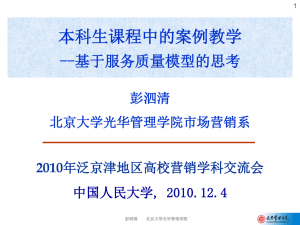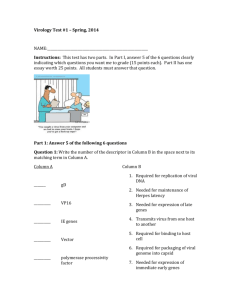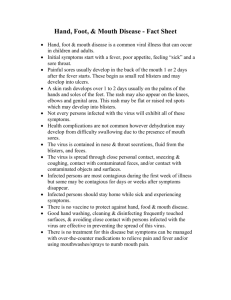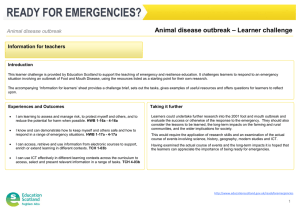New Scientist, UK 08-09-07 UK biosecurity lapse is "tip of iceberg"
advertisement
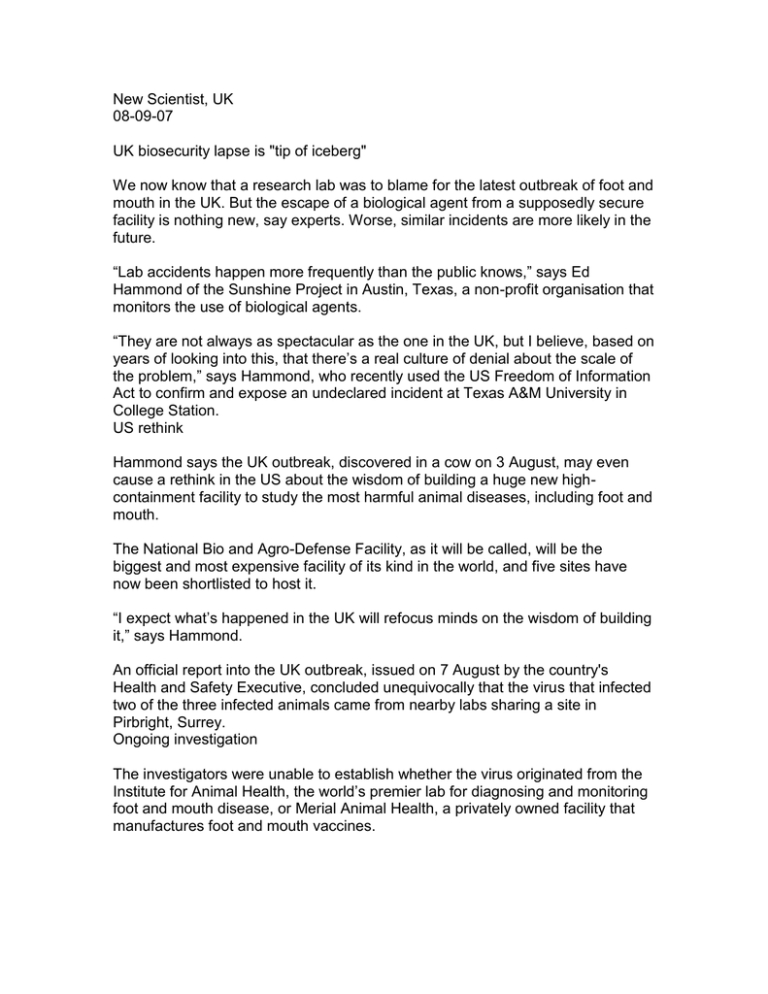
New Scientist, UK 08-09-07 UK biosecurity lapse is "tip of iceberg" We now know that a research lab was to blame for the latest outbreak of foot and mouth in the UK. But the escape of a biological agent from a supposedly secure facility is nothing new, say experts. Worse, similar incidents are more likely in the future. “Lab accidents happen more frequently than the public knows,” says Ed Hammond of the Sunshine Project in Austin, Texas, a non-profit organisation that monitors the use of biological agents. “They are not always as spectacular as the one in the UK, but I believe, based on years of looking into this, that there’s a real culture of denial about the scale of the problem,” says Hammond, who recently used the US Freedom of Information Act to confirm and expose an undeclared incident at Texas A&M University in College Station. US rethink Hammond says the UK outbreak, discovered in a cow on 3 August, may even cause a rethink in the US about the wisdom of building a huge new highcontainment facility to study the most harmful animal diseases, including foot and mouth. The National Bio and Agro-Defense Facility, as it will be called, will be the biggest and most expensive facility of its kind in the world, and five sites have now been shortlisted to host it. “I expect what’s happened in the UK will refocus minds on the wisdom of building it,” says Hammond. An official report into the UK outbreak, issued on 7 August by the country's Health and Safety Executive, concluded unequivocally that the virus that infected two of the three infected animals came from nearby labs sharing a site in Pirbright, Surrey. Ongoing investigation The investigators were unable to establish whether the virus originated from the Institute for Animal Health, the world’s premier lab for diagnosing and monitoring foot and mouth disease, or Merial Animal Health, a privately owned facility that manufactures foot and mouth vaccines. The investigators said that the chance of the virus escaping by air or in water was remote, but investigations are continuing into the effluent and drainage system at Merial. The most likely source, they say, is transmission via a member of staff, either by accident or deliberately, a conclusion the government is keen to follow up. Hammond says that the UK incident is the latest in a long line of accidents exposed by the Sunshine Project and by other groups, such as the Council for Responsible Genetics in Cambridge, Massachusetts, which has produced a comprehensive list of serious biosecurity accidents and lapses dating back to 1987. He argues that lapses are more likely because of the 10-fold expansion in bioweapons research since 2001. Kept in dark The most serious recent incident exposed by Hammond was at Texas A&M, where one lab worker contracted brucellosis after cleaning out a highcontainment cabinet contaminated with Brucella bacteria. At the same facility, Hammond discovered that three other workers had been exposed to potentially dangerous bacteria that cause Q Fever. The facility has since been closed and investigated by the Centers for Disease Control and Prevention, which should have been informed of the incidents by Texas A&M but was not. Nor did three of the affected workers have authorisation to work with the pathogens with which they became infected. In other recent accidents, three researchers at Boston University Medical Center fell ill in 2004 through exposure to bacteria that cause tularaemia, also known as rabbit fever. And in a 2004 outbreak in the Far East of severe acquired respiratory syndrome (SARS), several fatal infections were caused by research staff working on the virus who had themselves fallen ill. Some of the staff died. Weaponised anthrax But probably the worst accident of all was in the former Soviet Union in 1979 when weaponised anthrax bacteria escaped from a bioweapons facility in the Urals city of Sverdlovsk, now known as Ekaterinburg. At least 68 people died when workers changing shifts left a vent unfitted with a filter, allowing the germs to escape. The deaths were blamed on consumption of infected meat, and the truth only came to light in 1998 following investigations by Scott Cram and his colleagues at the Los Alamos National Laboratory in New Mexico, US. “That makes the problems with foot and mouth in the UK look rather small,” says James Roth of Iowa State University, a member of the US National Science Advisory Board for Biosecurity. Roth, who specialises in the study of animal diseases, says that there have been other instances like Pirbright when animal diseases have spread from labs. An outbreak of swine fever in Cuba between 1993 and 1997 was traced by Cuban virologists to an escaped lab strain called Margarita. Plum Island And in 1998, animals at the US Department of Agriculture’s Animal Disease Center on Plum Island, New York, caught foot and mouth disease in a part of the facility thought to have been isolated from work on the virus. Roth agrees there are lapses and accidents but stresses that, for the most part, biosafety measures are strictly observed. However, an hour-long power failure on 15 June at a facility run by the US Centers for Disease Control - one of only two organisations in the world that still stores the smallpox virus - prompted Congress to examine safety at the nation’s bioterror labs. The House Energy and Commerce Committee is due to hold hearings on the issue in September or October, committee spokeswoman Jodi Seth said on 7 August.
